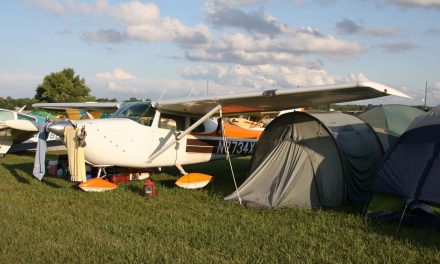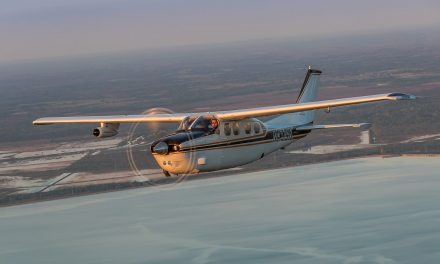Q
I just purchased my first airplane, and I couldn’t be more excited! With that said, I am going on a pre-delivery flight to make sure all the systems are in working order before I leave with my new bird. Since this will be my first time, I really don’t want to overlook anything or miss something that is common knowledge for seasoned airplane owners. Does anyone use a checklist or have a few key items they ask the demo pilot to perform or show on these types of flights? I appreciate any tips or advice!
—skylane_39p
A
Here are some of the things I do on my first pre-purchase flight of a new airplane (I’ve owned eight planes, so far!):
- Make sure the plane flies straight and level during cruise.
- Make sure the engine is smooth and no roughness. Check both mags.
- Make sure the prop will change pitch smoothly
- Make sure the brakes work smoothly.
- How close to book speeds and climb performance is it?
- Check all avionics thoroughly. Don’t forget ELT in tail.
- Check all lighting.
- Check windows (especially those that open).
- Check door locks.
- Check seat belts.
—Scott Sherer, COO Aviation Director
A
Was there a pre-purchase inspection done on the airplane? Has it had an annual inspection in the last 12 months? I would first look in the logbooks to check the above. Checking the logs will tell when/how much it has flown recently.
Engine items to check in logs:
- When was oil last changed? If more than six months, I would change it and cut open the filter before the delivery flight. If the oil is pitch black on the dipstick, that further tells you to change it before flight.
- While in logs, check how many hours are on each mag. If more than 500, they need to be overhauled. The number of years since overhaul also matters. If the delivery flight is a long one, consider options for getting stuck. Our delivery flight last year was one start away from leaving us stranded due to bad mag, and our mags had only 65 hours on a three-year-old overhaul.
- With mags off, I like to pull the prop through (carefully) to feel compression on all six cylinders with the engine cold. If one feels soft, then get ready to borescope. Does the airplane have an engine monitor? If so, watch it closely in flight.
- I would remove the top engine cowl side panels so you can make a close visual inspection of the engine before flying. Look for things that are chafing, pull on the exhaust to make sure it is secure, and look for any leaks at the cylinder flanges. Use your flashlight to see well. Be sure to have a digital CO monitor for your delivery flight and keep it in your scan.
- On a Cessna I’ve not flown before, I go to the elevator and hold it horizontal/level and move either side up and down, pushing to oppose either side. This confirms a sound connection to the torque tube. If you feel differential movement, don’t fly and find a mechanic. I’ve rejected more than one airplane for flight when finding differential elevator movement.
- I like to move the wingtips up and down a bit to feel for any movement in the strut connections in an unfamiliar airplane. Do both sides.
- Grab the nose gear torque link/scissors and try to move it side to side, and up and down. If there’s any movement, get ready for shimmy.
- With wheel fairings, it’s difficult but try to get a visual on each tire perimeter, looking for worn spots or cord. Any cord showing means replace tire before flight.
- You can also check the service manual’s annual inspection item list if you want to delve further on a specific item. Make sure you have a service manual in case you need to refer to it on the delivery flight.
Regarding item #3, it would be best to run the engine first and check to make sure P leads are grounding. This is done by briefly turning the mag switch to Off while the engine is at idle. If it keeps running, then there’s a broken P lead that should be repaired prior to doing your cold prop pull through in order to be safe. Mags must be grounding to safely pull the prop through compression on each cylinder.
Your normal preflight items are a given, and remember you are responsible to determine if the airplane is airworthy for this flight.
Let us know how it goes.
—Scott Sellers
A
Thank you all for so much great information! I did have a pre-buy completed, which included a logbook review and AD search. All came back clear and she’s coming with great documentation, and all previous work has been done at reputable/certified shops. They did find a couple mechanical items, one of them being the mags were past overhaul, and the seller agreed to replace and not overhaul to get it done in a timely manner. In fact, the seller repaired/replaced all three minor mechanical items found, plus some cosmetics. The last annual was September 2021 and it included the IFR recert. During pre-buy they changed the oil, cut the filter, and sent it out for testing. It came back clean, and I have the report. It does have a JPI engine monitor, and I am familiar with the exact one in there since it’s the same as the one in the plane I currently rent. I will definitely do all of the things you are recommending and will let everyone know how it goes. Thank you again, this is all a massive help!
—skylane_39p
A
I’ll add one more suggestion. When I bought mine, I took a good friend who’s a CFI and A&P. He was also familiar with 182s. Two heads are better than one. Also, we had a three-plus hour ride home. It gave me three hours with a CFI. I had my complex, but not high performance. Got that. It was a very good first flight.
—Cessnakevin
A
Upload engine monitor data to Savvy Analysis [savvyaviation.com/savvyanalysis].





